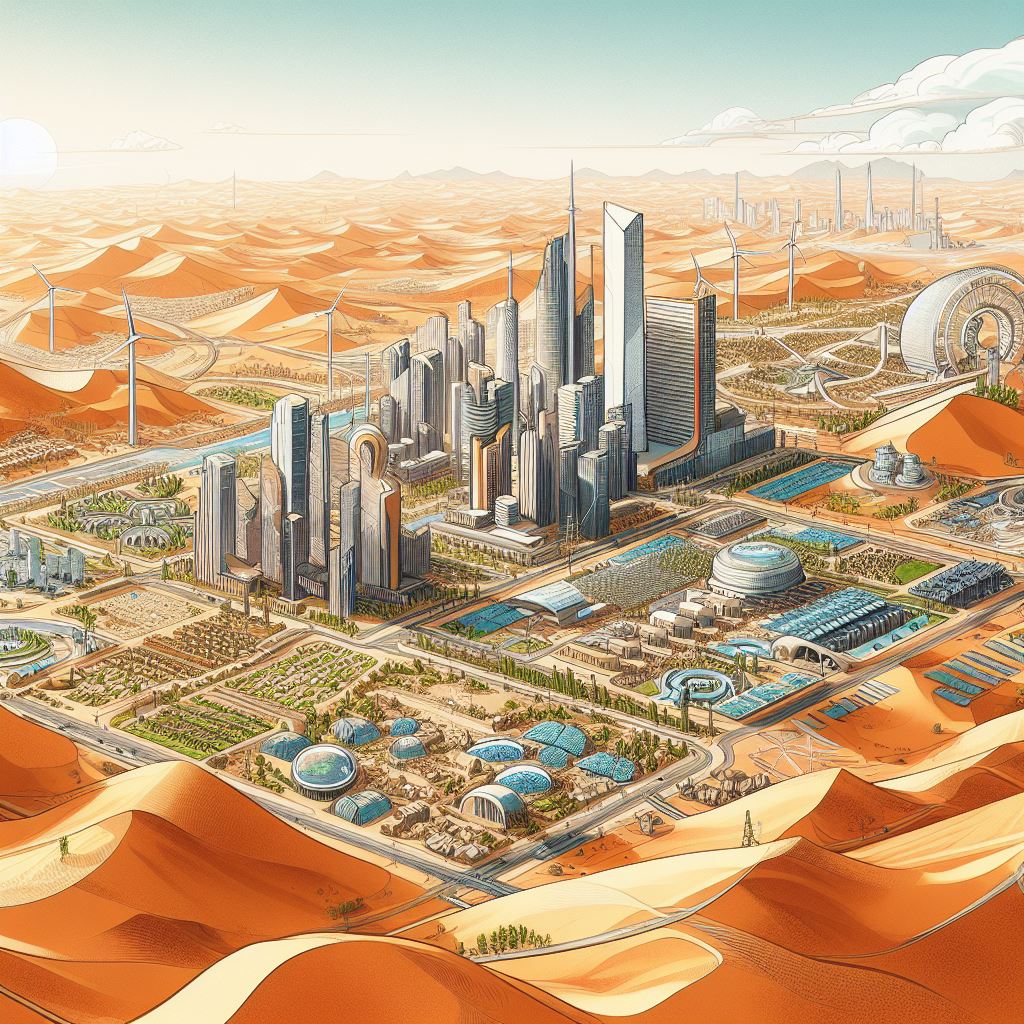
Desert Infrastructure: Overcoming Challenges with Innovation
Introduction
Desert regions, characterized by their extreme climates and arid landscapes, present a unique set of challenges for infrastructure development. The scarcity of water, shifting sands, and extreme temperatures necessitate innovative and sustainable solutions to ensure the resilient and environmentally-friendly growth of infrastructure in these regions. This article aims to provide an in-depth, authoritative, and objective analysis of the challenges and solutions in desert infrastructure development, focusing on the experiences of urban planners, developers, environmental scientists, and construction industry professionals.
Overview of Desert Regions
Desert regions are primarily defined by their lack of precipitation, extreme temperatures, and arid conditions. These areas cover about one-third of the Earth's land surface and are typically characterized by:
- Low Rainfall: Receiving less than 250mm of rain per year.
- Extreme Temperatures: Experiencing high daytime temperatures and cold nights.
- Sparse Vegetation: Hosting plant life adapted to drought conditions.
- Shifting Sands: Featuring landscapes that can change due to wind erosion.
Importance of Infrastructure Development in Desert Regions
Developing infrastructure in desert regions is crucial for several reasons:
- Economic Growth: Infrastructure development can boost economic activities, creating jobs and opportunities in these areas.
- Social Development: It can improve the quality of life for inhabitants by providing essential services like water, electricity, and connectivity.
- Environmental Conservation: Sustainable development can mitigate the impacts of desertification and promote ecological balance.
Challenges in Desert Infrastructure Development
Extreme Temperatures
Desert climates pose significant challenges due to their extreme temperatures, which can affect the durability and functionality of the built environment. The high daytime temperatures can lead to the rapid deterioration of building materials, while the cold nights can cause contraction, leading to structural issues.
Shifting Sands
The shifting sands in desert regions can impact the stability of structures. The constant movement of sand can erode foundations, leading to the weakening of structures over time.
Water Scarcity
Water is a scarce resource in desert regions, making it a significant challenge for infrastructure development. The lack of water affects construction processes and limits the availability of essential services.
Case Study: Dubai, UAE
Dubai, located in the Arabian Desert, has successfully overcome desert construction obstacles, transforming from a small trading port to a global metropolis. The city has implemented innovative desert building techniques and sustainable development practices to adapt its infrastructure to the harsh desert climate, such as:
- Burj Khalifa: The construction of the world's tallest building involved innovative cooling technologies and the use of high-performance concrete to withstand extreme temperatures.
- Sustainable City: This project focuses on minimizing energy, water, and waste to create a self-sustaining community in the desert.
Innovative Solutions and Techniques
Adapting Infrastructure to Desert Climates
To overcome desert construction obstacles, several adaptive techniques and solutions are being employed, including:
- Thermal Insulation: Using materials with high thermal resistance to reduce heat gain and loss.
- Water Conservation Technologies: Implementing water-efficient appliances and recycling systems to mitigate water scarcity.
- Foundation Engineering: Developing foundations that can withstand the movement of sands and provide stability to structures.
Sustainable Development in Arid Regions
Sustainable and environmentally-friendly approaches are paramount in desert regions to ensure the long-term viability of projects. These include:
- Renewable Energy Sources: Utilizing solar and wind energy to power developments.
- Green Building Practices: Incorporating sustainable materials and energy-efficient designs.
- Ecosystem Conservation: Preserving the natural environment and biodiversity of the desert.
Case Study: Masdar City, Abu Dhabi
Masdar City in Abu Dhabi is a pioneering example of sustainable development in arid regions. The city aims to be a zero-carbon, zero-waste, and car-free city, focusing on renewable energy, water conservation, and sustainable architecture. Some of its innovative features include:
- Solar Power: The city is powered by a 10MW solar photovoltaic plant.
- Sustainable Transportation: The city employs a network of electric vehicles and public transport to reduce carbon emissions.
- Water Conservation: The city uses a range of water-saving technologies and treats and reuses wastewater.
Economic and Social Implications
Economic Growth and Diversification
Desert infrastructure development can drive economic growth and diversification by attracting investments, creating jobs, and fostering innovation. For instance, the development of infrastructure in Dubai has led to the growth of tourism, real estate, and financial services sectors, contributing to the diversification of its economy.
Social Development and Quality of Life
The development of infrastructure in desert regions can enhance the quality of life for inhabitants by providing access to essential services, improving connectivity, and creating opportunities for education and healthcare. It can also foster community development and social cohesion by promoting inclusive and equitable growth.
Environmental Sustainability
The emphasis on sustainable desert building and development ensures the conservation of natural resources and the protection of ecosystems. It mitigates the impacts of desertification and climate change, promoting environmental sustainability and resilience.
Conclusion
Desert infrastructure development is fraught with challenges stemming from extreme temperatures, shifting sands, and water scarcity inherent to arid landscapes. However, innovative solutions and sustainable practices are paving the way for successful infrastructure projects in these regions. The case studies of Dubai and Masdar City exemplify the potential for overcoming desert construction obstacles through adaptive techniques, sustainable development, and a focus on environmental conservation.
The economic and social implications of desert infrastructure development are profound, driving economic growth, improving quality of life, and fostering social development and environmental sustainability. By adhering to sustainable and environmentally-friendly approaches, urban planners, developers, environmental scientists, and construction industry professionals can ensure the resilient and sustainable growth of infrastructure in desert regions, contributing to the global goals of sustainable development and climate action.
Civil Engineering Engineering Topics


